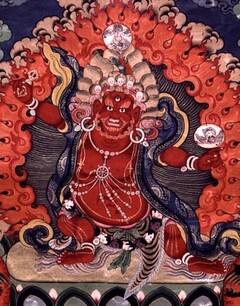Takhyung Barwa Series
Texts related to Takhyung Barwa (rta khyung 'bar ba), a practice from the Longchen Nyingtik that combines the three deities Hayagrīva, Garuḍa and Guru Drakpo, and is renowned for its capacity to subjugate negative forces and cure disease:
Commentaries
by
Jigme Lingpa
Dokpa
Empowerment
by
Jigme Lingpa
History
by
Jigme Lingpa
Lineage Prayers
Sādhanas
by
Jigme Lingpa
